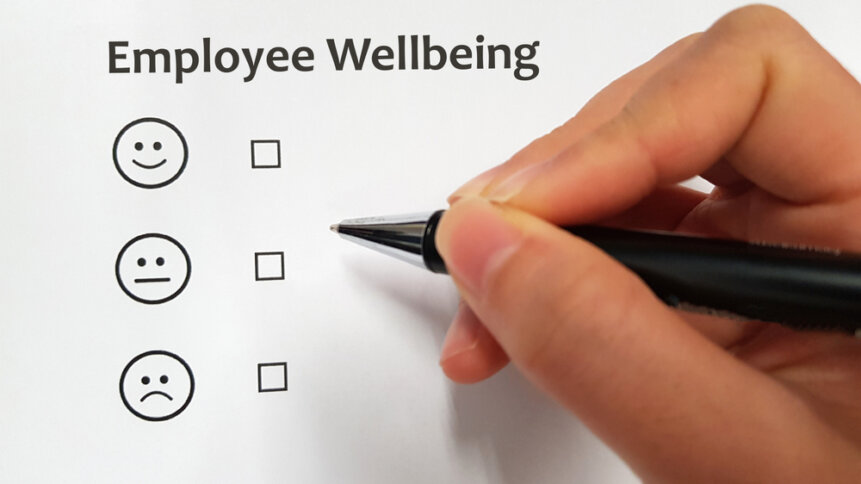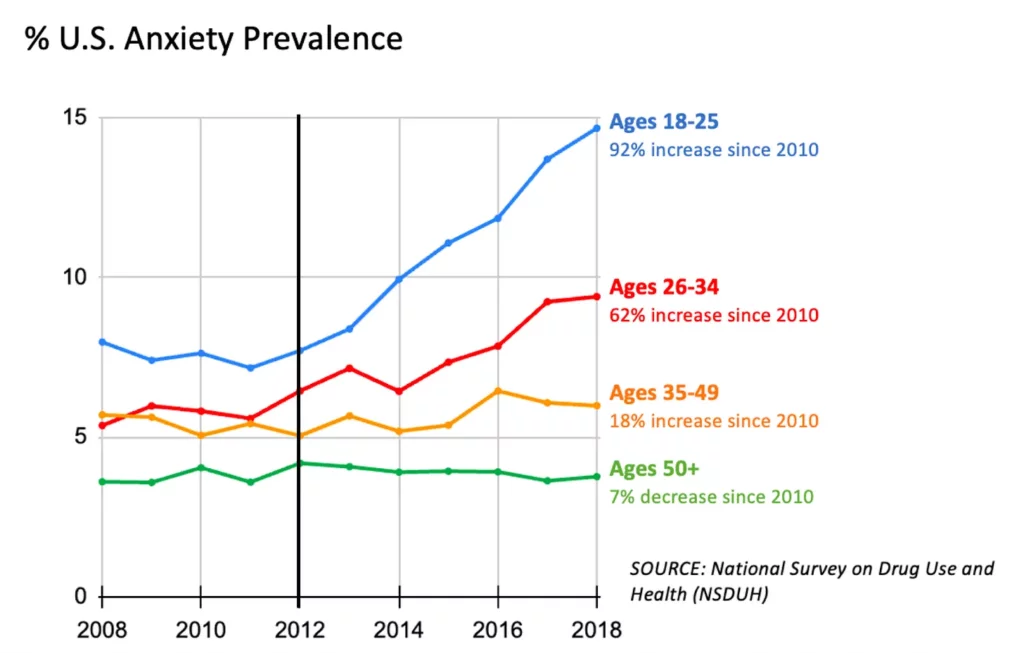An epidemic: the impact of worsening mental health on businesses

Mental illness is not often talked about in the business. Only within the past few years has the topic of mental health really entered the workplace lexicon, but there’s evidence that an epidemic of mental illness began around 2012, simultaneously in the USA, UK, Canada, Australia and New Zealand.
That phenomenon is being documented by social psychologist John Haidt on his Substack, After Babel, where he’s amassing research on the implications that social media has had on the mental health of young people: “the transformation of society in the 2010s was not caused by anxious college students. They were simply the ‘canaries in the coal mine’ — the first generation to have moved their social lives onto social media platforms. As soon as they did so, around 2012, an epidemic of mental illness began.”
The uptick in reported mental illness existed across generations, but most affected the younger generations who were quicker to move their lives online.

Via https://jonathanhaidt.substack.com/p/welcome-to-the-after-babel-substack
Haidt’s evidence, as well as open discussion of arguments against his claims, all focuses on social media habits and teen mental health – particularly that of teenage girls. Social media is not the only cause, though – we can also look at the rewiring of childhood that began in the 1990s and accelerated in the early 2010s.
Teen mental health collapsed in the 2010s – and those teens they are now entering the workforce, or are already in it. So, what relevance does all this have to the workplace?
Do we assume the same is true of current workers?
Business owners might extrapolate the findings into the mental health of their employees. but directly assuming that X percentage of teenagers suffer from depression, so X percentage of the workforce must, too, doesn’t work.
The migration online that began in the 2010s radically shifted society, including – if not especially – workplaces. And yet, the most marked change to the way that businesses function for their employees came only with the forced reshaping of work patterns and practices that came with the pandemic.
If we assume that, as social media “rewired” teenage girls’ mental health, technological advances in the workplace disrupted working life for employees, then companies should be considering the implications of a novel workforce. Does the office need to be reshaped to allow for a workforce that suffers worse mental health than ever before?
The next generation of employees.
Alternatively, employers could think of the teens represented in the research as the next generation workforce. Mental health problems during childhood or adolescence are associated with detrimental developmental outcomes in young adulthood.
Children and adolescents with mental health problems often display impaired mental health, lower life satisfaction and poorer health-related quality of life as adults.
The 11-year-olds of 2011 are recent graduates – if they haven’t already been in the workforce for a couple of years.
There are advantages to this next generation’s shifted perspectives, as the world only becomes more technologically advanced – and technologically dependent. The potential benefits that a digital-native employee could bring to a company shouldn’t be curbed by poor mental health support in the workplace.
Not only are the next generation of workers the most technologically literate yet, they are also the most aware of the importance of maintaining good mental health. This means that companies that show an awareness of, and allowances for, the impacts of mental illness will be more appealing to the emerging workforce.
Why does mental health matter in business?
All employers should care about their employees’ mental health by virtue of basic human decency. But basic human decency has previous been regarded as difficult to translate into bottom-line items (and so, has been thought of as a dispensable ‘nice-to-have’ by too may companies). Now though, in an age growing ever more comfortable talking about mental health, there are plenty of financial reasons to care about the mental health of your employees, too – and they can be articulated:
- The mental health of the workforce affects their productivity: Employees working long hours might hide their anxieties by diving into work, but will ultimately be held back by the negative self-talk that pushes them to stay later at the office.
- Showing that your company cares will increase employee retention: Your workforce will feel more secure in a culture of well-being. Employers who show compassion in both ad hoc and structured ways are more likely to save time and money rehiring roles that, without the right support, have a fast turnover rate.
- All industries experience significant financial losses as a result of poor mental health in the workplace: High stress equals low profits! For every dollar spent on supporting the workforce’s mental health, employers get back $5 on their investment in reduced presenteeism, absenteeism, and staff turnover.
The upshot is that companies need to show an awareness of the increasingly mainstream discussion of mental health. In an environment where an employee is reluctant to tell managerial staff about a problem with their wellbeing, they can potentially spiral and ultimately cost the company more than a “mental health day” ever would have.








